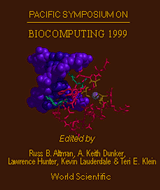Use of BONSAI decision trees for the identification of potential MHC class I peptide epitope motifs
Savoie CJ, Kamikawaji N, Sasazuki T, Kuhara S
Dept. of Genetics, Kyushu University, Fukuoka, Japan.
Pac Symp Biocomput. 1999;:182-9.

Abstract
Recognition of short peptides of 8 to 10 mer bound to MHC class I molecules by cytotoxic T lymphocytes forms the basis of cellular immunity. While the sequence motifs necessary for binding of intracellular peptides to MHC have been well studied, little is known about sequence motifs that may cause preferential affinity to the T cell receptor and/or preferential recognition and response by T cells. Here we demonstrate that computational learning systems can be useful to elucidate sequence motifs that affect T cell activation. Knowledge of T cell activation motifs could be useful for targeted vaccine design or immunotherapy. With the BONSAI computational learning algorithm, using a database of previously reported MHC bound peptides that had positive or negative T cell responses, we were able to identify sequence motif rules that explain 70% of positive T cell responses and 84% of negative T cell responses.
[Full-Text PDF] [PSB Home Page]